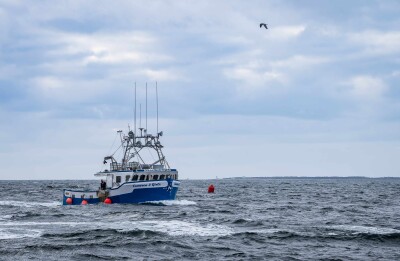Seafood coming from and going to China is piling up in freezer vans and cold storages indefinitely as the coronavirus continues to cause commerce chaos around the world.
Virus precautions mean that many ships can't get into Chinese ports, others are stuck at docks waiting for workers to return, and still more are idling in "floating quarantined zones," as countries refuse to allow crews of ships that have docked at Chinese ports to leave the boat until they have been declared virus-free.
Alaska seafood exports to China of nearly $1 billion include products for their own markets, but the bulk goes there for reprocessing and shipment back to the United States and other countries.
“If you have plants that have product coming in and no workers to fill it, you're going to get that overflowing cold storage situation. So it's definitely a problem on the reprocessing side. On the consumption side, if people aren't going out to eat and going out to the market to buy seafood, that's going to take consumption down as well. So there's a couple different ways that it's working against moving seafood through the supply chain,” said Andy Wink, director of the Bristol Bay Regional Seafood Development Association and an economist who has tracked world salmon markets for more than a decade.
China is the number one trade partner for the ports of Seattle and Tacoma, where ships are typically stacked with containers arriving full of goods, ranging from clothing and toys to electronics. Many would normally return to China laden with Alaska seafood and other U.S. products, but operations have slowed dramatically.
“Factories aren’t open, and goods aren’t being made. We don’t know yet what that impact is going to be,” Peter McGraw of Northwest Seaport Alliance told KOMO news. “There have been a lot of blank sailings. That means a lot of canceled ships.”
About 80 percent of trade of the world’s goods by volume is carried by sea, and China is home to seven of the world's 10 busiest container ports, according to the United Nations Conference on Trade and Development.
The situation also is diverting more seafood from elsewhere into the United States.
“The big salmon farming companies are looking elsewhere to direct their products, and the U.S. is the obvious choice,” he added. “So we've seen salmon prices on average down about 10 percent since the first of the year at the wholesale level.”
As the crisis builds potentially into the spring, many major fisheries with year-round selling seasons but shorter harvests, such as Alaska salmon, begin engaging in price negotiations and set dock prices, said market expert John Sackton.
“The price setting at the dock is based on packers’ and distributors’ expectations of price for the entire year, the supply and availability of what is landed, and the costs and business expectations of the harvesters,” Sackton wrote in his Winding Glass blog. “Regardless of what price is paid in May or June, packers are looking at what price they expect to get four, five or six months into the future. In normal years, this is fraught with risk… This year, the risk is off the charts, because we simply don’t know how severe, economically or socially, the disruption from this disease may get.”
Alaska has worked hard to diversify its seafood markets beyond China since trade tariffs imposed in 2018 by the Trump administration cut into sales with its top customer. But the virus scare is causing disruption throughout new and more established sales regions, said Hannah Lindoff, global marketing director for the Alaska Seafood Marketing Institute.
“We have on the ground representatives conducting marketing activities to help raise the value of Alaska seafood products. However, due to travel bans and health concerns, several chef seminars in China designed to boost knowledge of different Alaska species planned for this month have been canceled. Additionally, events in Singapore and Italy were also canceled. ASMI continues to prioritize the health of our overseas representatives and partners in these regions, and hope for positive news,” Lindoff said in an email message.
Air cargo operations have been differently affected, and “the cancellation of flights in and out of China has been so extensive that freight forwarders have had a very hard time finding any space at all on planes for their shipments,” according to the New York Times.
U.S. shoppers could see items missing from store shelves as early as mid-April, Edward Kelly of Wells Fargo Securities told the Los Angeles Times. Big-box retailers such as Walmart and Target “could be the first to experience out-of-stock issues,” Kelly said. Of note: 80 percent of the drugs that Americans depend upon come from overseas countries, and China is the largest manufacturer.







